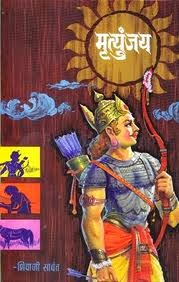Movie Review: Amrapali
 The story of the legendary dancer Amrapali, renowned for her extraordinary beauty is an immensely fascinating one. For the uninitiated, Amrapali was the royal courtesan of Vaishali, situated roughly around present day Bihar in 500 BCE. Prince Ajatshatru, the king of the Magadha empire, who falls in love with her after he attacks Vaishali. The story of Amrapali and elaborate descriptions of her extraordinary beauty find mention in old Pali and Buddhist traditions.
The story of the legendary dancer Amrapali, renowned for her extraordinary beauty is an immensely fascinating one. For the uninitiated, Amrapali was the royal courtesan of Vaishali, situated roughly around present day Bihar in 500 BCE. Prince Ajatshatru, the king of the Magadha empire, who falls in love with her after he attacks Vaishali. The story of Amrapali and elaborate descriptions of her extraordinary beauty find mention in old Pali and Buddhist traditions. The 1966 film made by Lekh Tandon featuring veteran dancer-actress Vyjayanthimala in the title role as Amrapali makes considerable impact. While the story of the film is not built on the standard tale of star-crossed lovers but a clash of ideologies. Ajatshatru (Sunil Dutt), the emperor of Magadha has been unable to get Vaishali into submission. He announces an attack on Vaishali against the wishes of his commander-in-chief Veer (Premnath) citing that the Magadhan army is not ready for full blown battles. He promptly informs the king that the soldiers of Magadha would not be able to resist the army of Vaishali. Ajatshatru pays no heed and is determined to bring Vaishali under the influence of Magadha. It is after the Magadha army is routed that he falls in love with Amrapali.
Vyjayanthimala as Amrapali is an epitome of beauty and sensuality. Seeing her confidence, independence and beauty which has been portrayed effectively through the film, I was mentally convinced that Amrapali would resemble her. Her dancing background ensures that she holds her own in the film. Sunil Dutt as Ajatshatru is endearing despite being arrogant and yet softened by love at another. He doesn't understand her anguish until the last moment and also that love has to be selfless. For the kind of preparation a role like Ajatshatru demands, Sunil Dutt brought out the conflict beautifully.
In addition to the main leads, the film has been ably supported by a whole host of others: Premnath, Mridula Rani, K.N. Singh and other actors such as the ones who played the son of the guru, the rajpurohit and the wounded soldier who recognises the emperor. At 1 hour 59 minutes, the film is fast-paced and brilliantly shot by Dwarka Divecha especially as the colours beginning with red and yellow to the darker colours as the story moves from the palace to the battlefield.
The art direction especially the palaces look rich and elegant without suffering from garish colours unlike other period films. Despite a gripping plot, it is a shame that the film failed at the box office which prompted Vyjayanthimala to quit acting. The story flows in sync and there are no jumps. The music of the film was provided by Shankar-Jaikishen and with just four songs throughout the film, the music has minimal instrumentation and encourages vocals by the eternally timeless Lata Mangeshkar.
My only grudge is that the film deviates the original story. The original story believes that it was Bimbisara who was Amrapali's lover and not Ajatshatru. Hence, the deviation and the interchanging of Bimbisara's son to Ajatashatru made me feel a little discomfort. However, do not let this dampen your enthusiasm of watching the film.


Comments